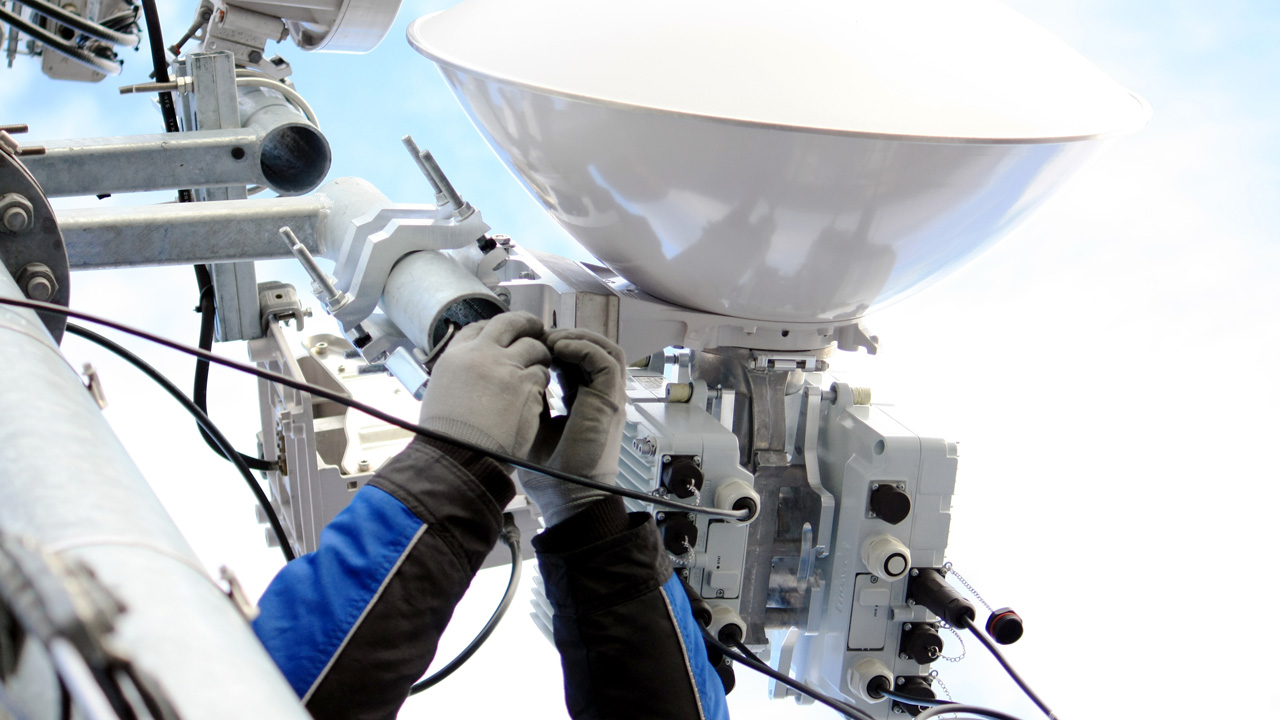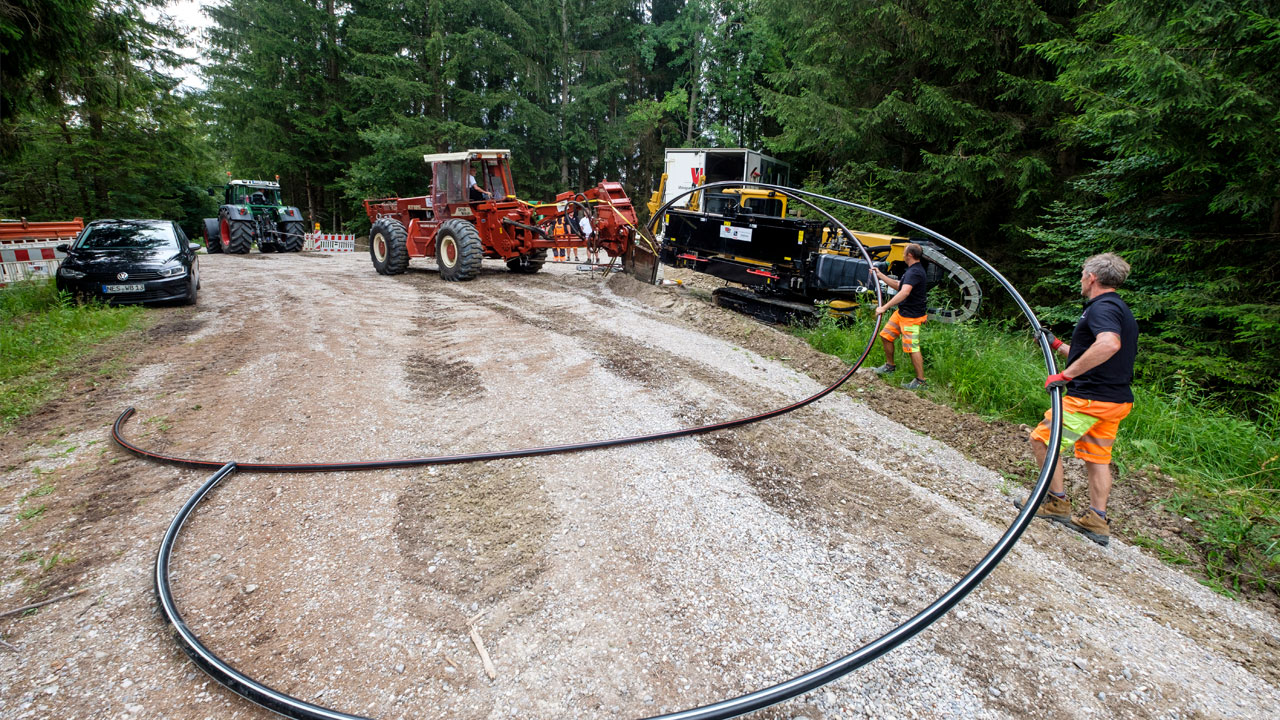11.12.2019
This is how 5G gets to the radio mast: Glass fiber and directional radio provide for fast 5G expansion

Radio relay technology helps to ensure data traffic between the base station and the network ()
A mobile phone mast forms the final node that makes the 5G network available where it is needed - at the customer's premises. So far, so understandable. But how does the network actually get to the mast? Contrary to popular belief, there are two ways to connect to the mast to take full advantage of the currently available bandwidth and performance of the 5G network - fiber optics and radio relay.
The first choice for the new mobile communications standard is fiber optic connections. They reliably transmit high data rates. At present, however, not all mobile phone sites have fiber optic connections. In this case, radio relay technology can help to ensure data traffic between the base station and the network behind it (mobile backhaul). This also applies to the fast mobile Internet over 5G in the current expansion stage.
"With the current state of the art, 5G does not necessarily require a fiber optic connection," explains Anja Höhn, Phd, TCP Senior Lead and head of the 5G TechCity project at Telefónica Germany. "The 5G standard is not yet playing to its full potential. We will experience a long-term evolution of the technology. Until the corresponding system technology and the commercially usable frequency spectrum have been expanded, 5G can also be implemented via microwave without any loss of quality."
This step-by-step expansion has also been seen in the predecessor technologies: from GPRS to Edge, UMTS to HSDPA and HSPA+ or from LTE to LTE Advanced and LTE Advanced Pro. The new 5G standard will also continue to develop and become more powerful in the coming years. The goal: "One hundred times faster than LTE" or "latency of 1 millisecond".
Briefly explained: How directional radio works
Radio relay technology uses radio waves to establish wireless data connections between two locations. In contrast to other radio transmissions, such as broadcasting, the waves are bundled and transmitted to a receiver - the nearest radio relay antenna - in a targeted manner. This makes the connection not only secure, but also fast and powerful. In this way, the signals are transported from radio mast to radio mast until they are led away by cable into the core network and processed. Currently, speeds of 10 Gbit/s can be achieved via directional radio, in some cases even up to 20 Gbit/s. The distance between two radio relay antennas can be up to 7 kilometers. Speeds of up to 2 Gbit/s can also be transmitted over longer distances.
5G-Highspeed for customers also possible via radio relay

"Radio relay remains relevant even in the 5G age. This applies in particular to a rapid expansion of capacity for residential applications and with regard to a faster expansion of space," says Anja Höhn, Phd. After all, laying fiber-optic lines to mobile communications sites requires long approval procedures and high investments. The fast and comparatively simple expansion of microwave links brings advantages, especially in rural areas and at mobile phone sites that have not been connected with fiber optics up to now. As a result, customers in rural areas are already benefiting from fast data rates via LTE and, in future, 5G. The LTE standard is more than adequate for current digital applications anyway, for example for instant messaging, music and video streaming, gaming or for analyzing the weather, plants and animals in the agricultural sector.
At the same time, Telefónica Deutschland is also driving forward the connection of mobile communications sites with fiber optic lines. To this end, the company is counting on cooperation with other network operators and telecommunications service providers.
Telefónica Deutschland has already successfully implemented microwave links for 5G in the course of various 5G projects. Since 2016, the company has been researching 5G applications together with the telecommunications supplier Huawei as part of the TechCity Munich project. In the field test, the project partners have achieved peak data rates of 16 Gbit/s for mobile phone connections - via radio relay. In addition, Telefónica Deutschland is developing new options for using microwave as a 5G feeder technology in cooperation with Nokia in the Innovation Cluster in Berlin, which was founded in 2018.
For comprehensive availability of fast data connections such as 5G, radio relay is currently an important part of an efficient network structure.